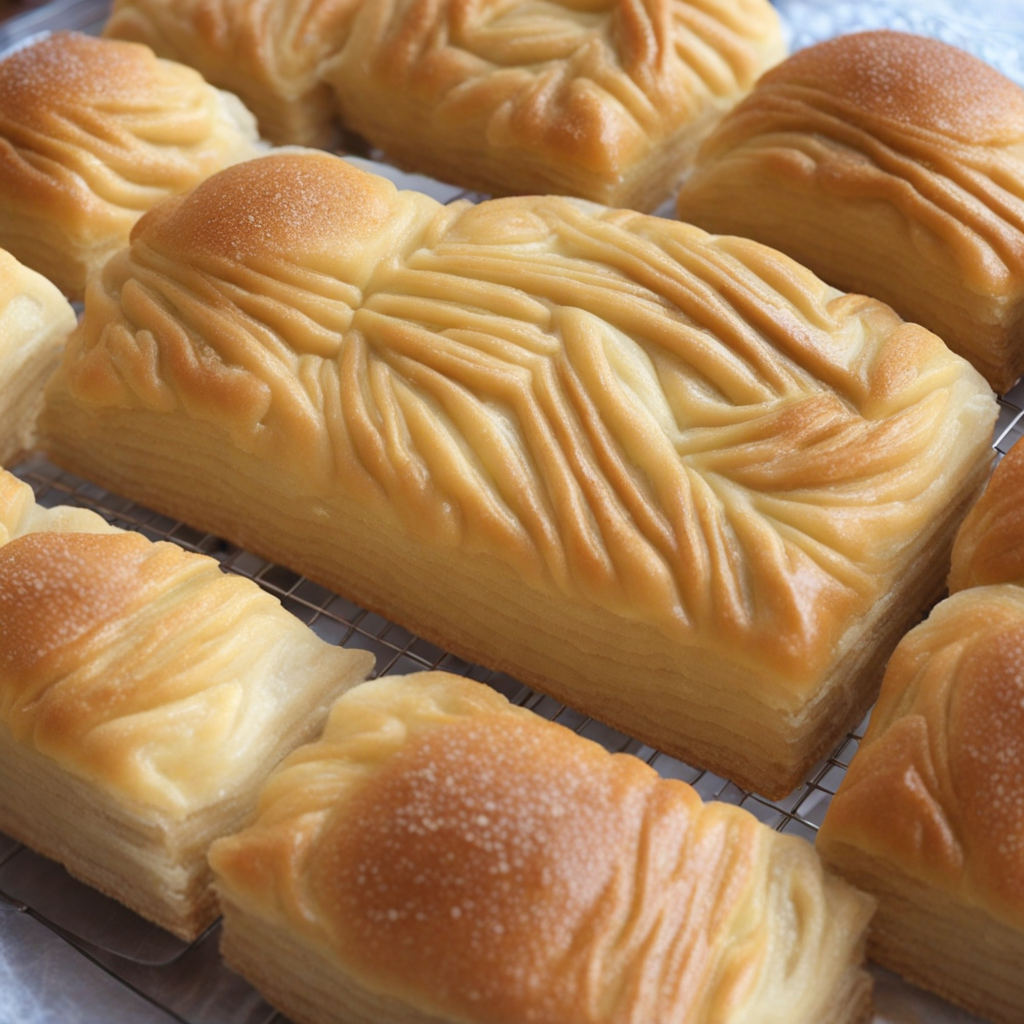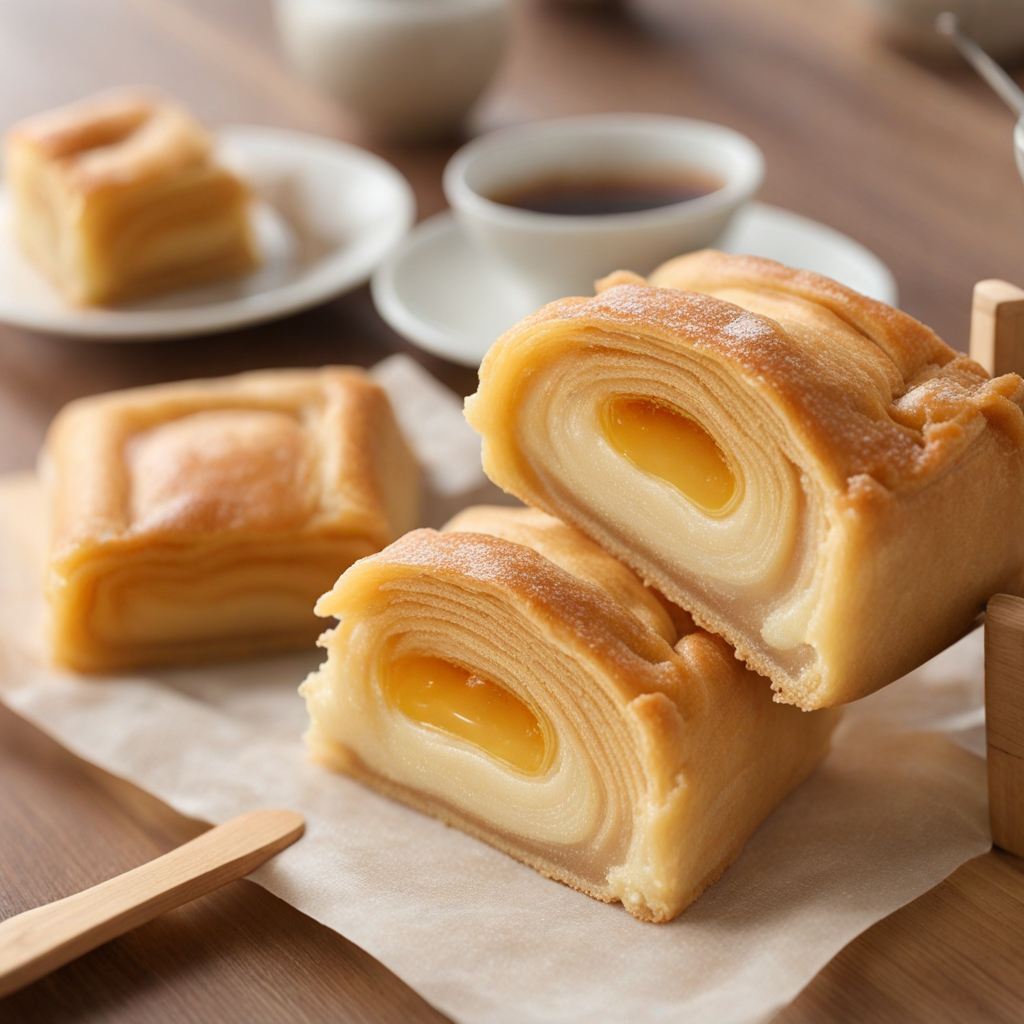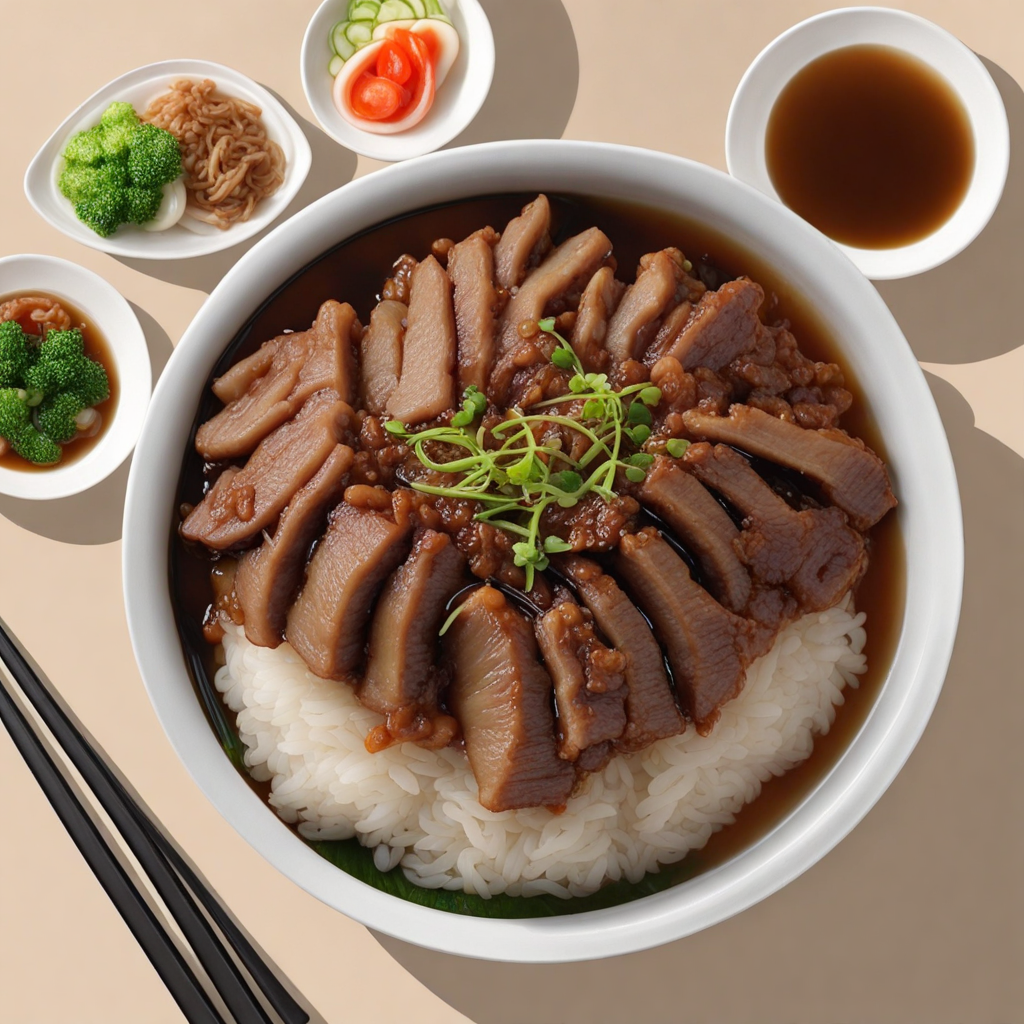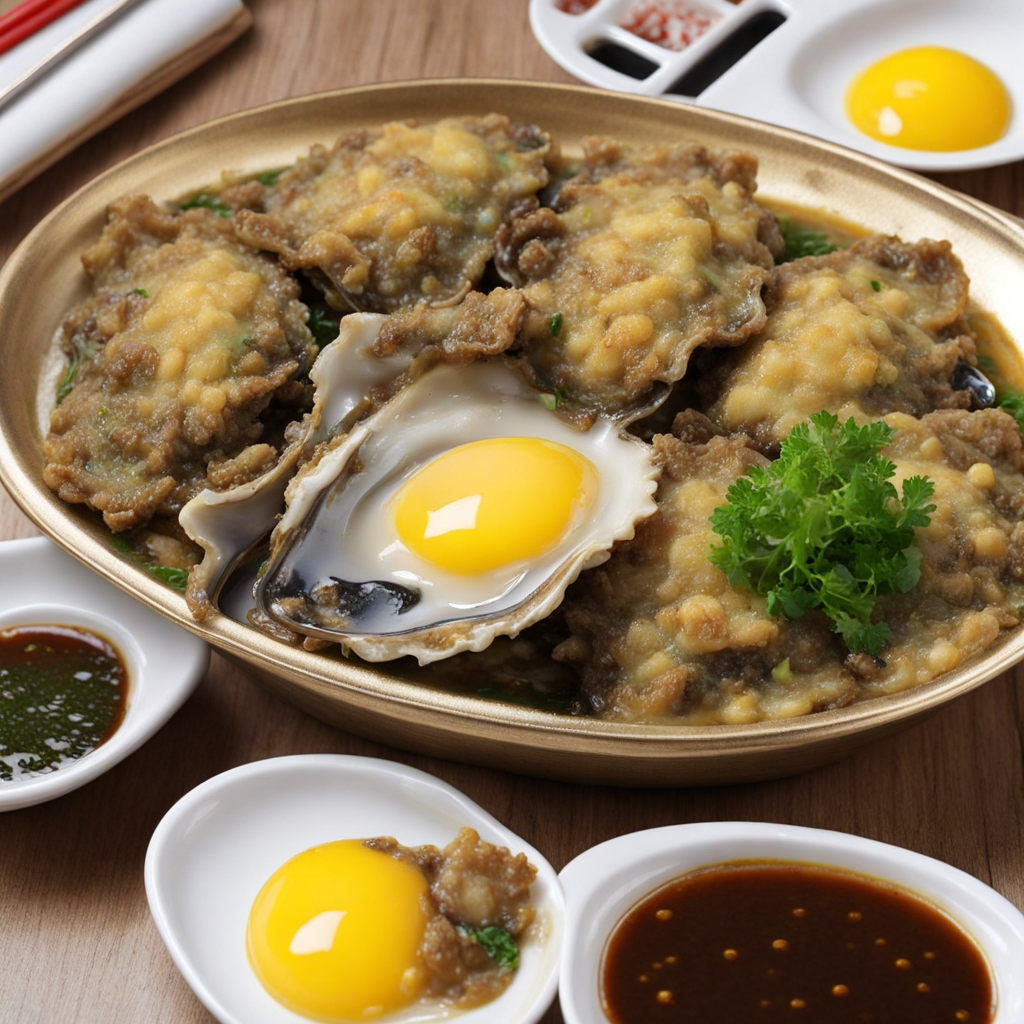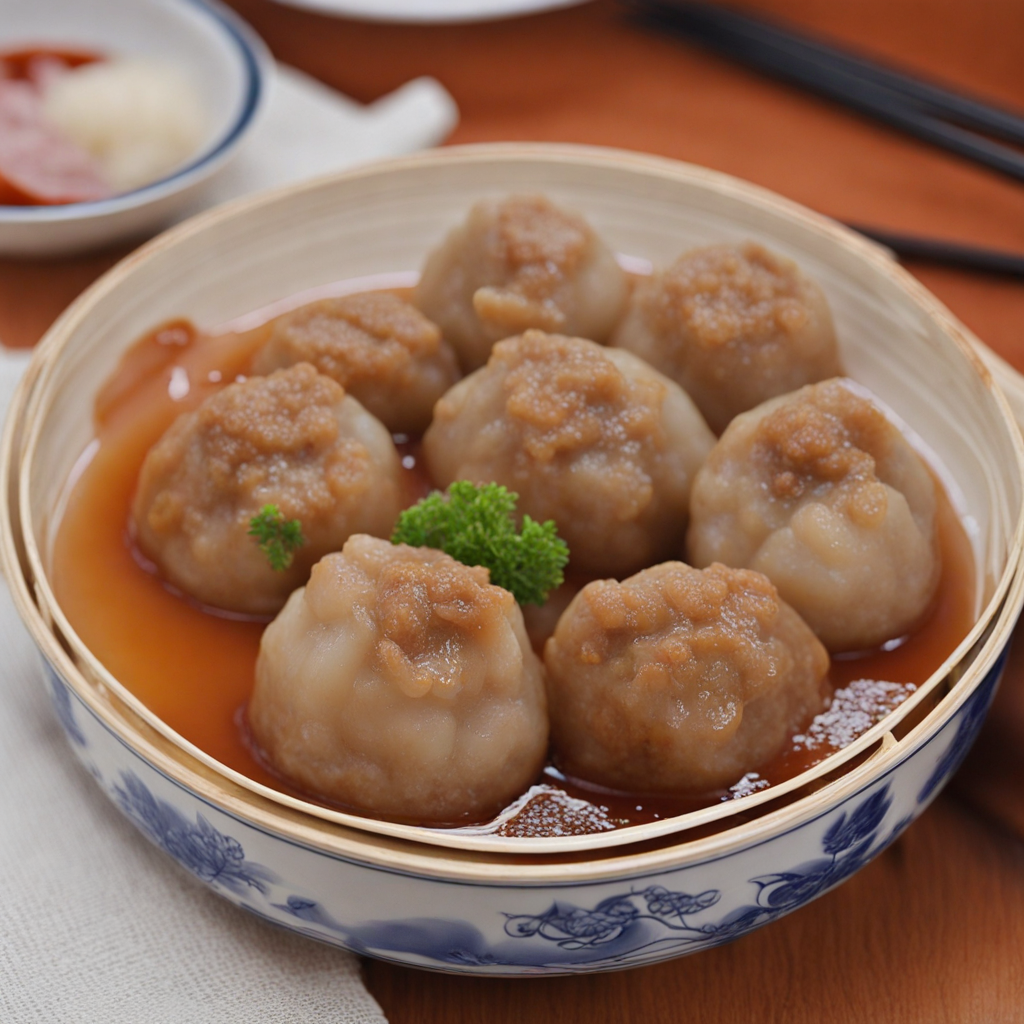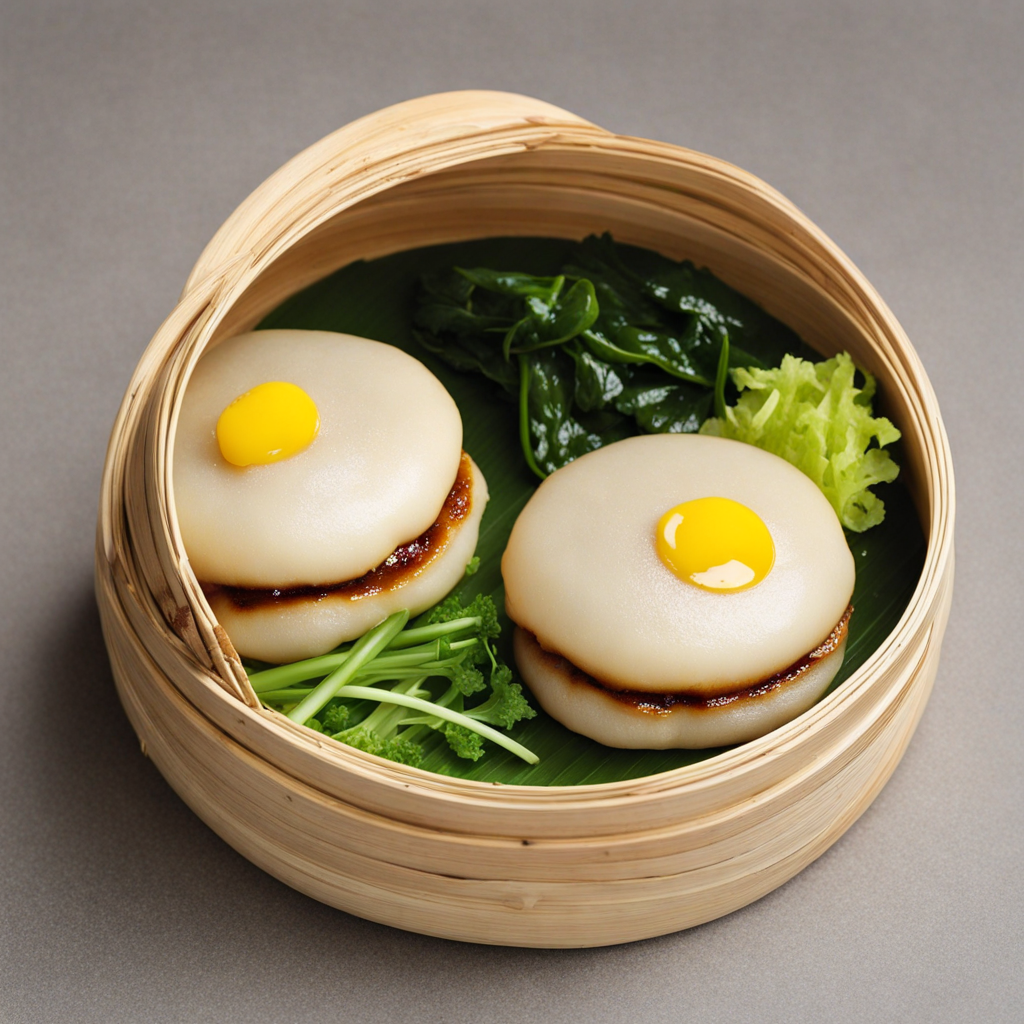Sun Cake
Sun Cake, or "Taiyang Bing," is a beloved Taiwanese pastry that embodies the country's rich culinary heritage. This delightful treat features a flaky, tender outer crust that encases a sweet, golden filling made primarily from maltose and often flavored with a hint of wheat flour and sugar. The texture of the crust is light and airy, almost reminiscent of a croissant, making each bite an indulgent experience. When you take your first bite, you'll be met with a satisfying crunch followed by the melt-in-your-mouth sweetness of the filling, making it a perfect companion for tea or coffee. What sets Sun Cake apart is its unique preparation process. The dough is skillfully layered and rolled, which results in the distinct flaky texture. Traditionally made by hand, each pastry reflects the craftsmanship of the baker. The filling, while primarily sweet, offers a subtle depth of flavor that balances the richness of the pastry. Some variations may include additional ingredients such as sesame or nuts, providing an extra dimension to the overall taste experience. Sun Cake is not just a dessert; it's a cultural symbol of Taiwan, often given as a gift and enjoyed during festivals and celebrations. The pastries are beautifully packaged, making them a popular choice for tourists seeking to bring a piece of Taiwan back home. Each bite transports you to the bustling streets of Taiwan, where the aroma of freshly baked Sun Cakes wafts through the air, inviting you to indulge in this sweet, flaky delight that captures the essence of Taiwanese culinary artistry.
How It Became This Dish
The History of 太陽餅 (Taiyang Bing): A Culinary Gem of Taiwan #### Origins of 太陽餅 Taiyang Bing, or Sun Cake, is a traditional pastry from Taiwan that has a unique place in the island’s culinary landscape. The origins of this delightful treat can be traced back to the late 19th century, during the Qing Dynasty, when Taiwan was undergoing significant cultural and agricultural changes. The most commonly accepted narrative attributes the creation of Taiyang Bing to the city of Taichung, where it was originally made by local bakers as a way to celebrate the harvest season. Taiwan's agricultural prosperity, particularly in the production of wheat, provided the perfect backdrop for the development of this pastry. The primary ingredients of Taiyang Bing are flour, maltose, and a sweet filling, often made from red bean paste or a mixture of sugar and maltose. The name "太陽餅" translates to "Sun Cake," a reference that some scholars believe reflects the cake's round shape and golden color, reminiscent of the sun. #### Cultural Significance Taiyang Bing not only serves as a delicious snack but is also imbued with cultural significance. It has become a symbol of Taiwanese craftsmanship and culinary art. The pastry is traditionally offered during festivals and celebrations, particularly during the Lunar New Year, symbolizing good fortune and prosperity. It is commonly gifted to family and friends, representing goodwill and the sharing of abundance. In Taiwan, food is deeply intertwined with social rituals, and Taiyang Bing is no exception. It is often featured in gatherings, whether in casual family settings or more formal affairs. The act of sharing these cakes is seen as a way to strengthen bonds among loved ones and as a gesture of hospitality to guests. The cultural significance of Taiyang Bing extends beyond its consumption; it also reflects Taiwan's history of immigration and cultural exchange. The blending of various culinary traditions—Indigenous, Han Chinese, Japanese, and later global influences—has made Taiwan a melting pot of flavors. As such, Taiyang Bing embodies this rich tapestry of history, representing not just a food item but a cultural artifact that tells the stories of the people who have lived and thrived on the island. #### Development Over Time As Taiwan entered the 20th century, the popularity of Taiyang Bing began to rise, particularly during the Japanese colonial period (1895-1945). The Japanese introduced new baking techniques and influenced local culinary practices. This period saw an evolution in the recipe and preparation of Taiyang Bing, with bakers experimenting with various fillings and presentation styles. The introduction of modern baking technologies helped to streamline production, allowing for wider distribution and increased popularity. After World War II, as Taiwan transitioned to a republic, Taiyang Bing continued to thrive. The post-war economic boom led to an increase in consumer culture, and bakeries began to pop up across Taiwan, with Taiyang Bing becoming a staple offering. It was during this time that the pastry began to be packaged and sold commercially, making it more accessible to the general public. In recent decades, Taiyang Bing has gained recognition beyond Taiwan and has become popular in overseas Taiwanese communities. The rise of international travel and globalization has allowed this traditional pastry to reach new audiences. Today, visitors to Taiwan often seek out Taiyang Bing as a souvenir, helping to promote its cultural significance globally. Moreover, modern bakers have taken creative liberties with the traditional recipe, introducing variations that cater to contemporary tastes. Some bakers now offer innovative fillings such as matcha, chocolate, and fruit, while others focus on making gluten-free versions. These adaptations reflect a broader trend in food culture where tradition meets innovation, creating a dynamic culinary landscape in Taiwan. #### Conclusion Taiyang Bing is more than just a pastry; it is a reflection of Taiwan's rich history, cultural identity, and the resilience of its people. From its humble beginnings in the late 19th century to its status as a beloved treat today, Taiyang Bing encapsulates the spirit of Taiwan—a blend of tradition and modernity, local ingredients and global influences. As Taiwan continues to evolve, so too does Taiyang Bing, reminding us that food is not only about nourishment but also about storytelling. Each bite of this sweet, flaky delight carries with it the echoes of history, the warmth of community, and the promise of shared joy. Whether enjoyed at a festive gathering or as a simple snack, Taiyang Bing remains a timeless symbol of Taiwanese culture, inviting all who taste it to partake in its rich heritage.
You may like
Discover local flavors from Taiwan


